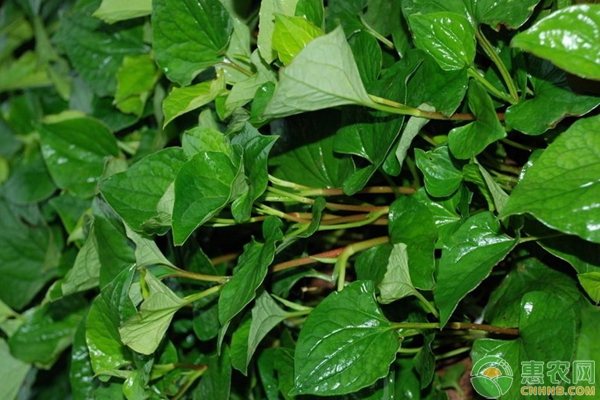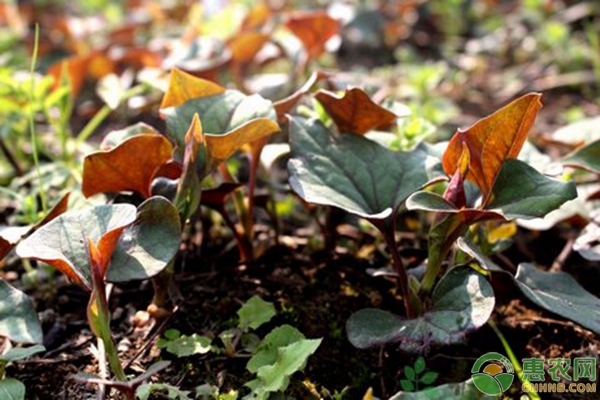Explain the cultivation techniques of bamboo forest intercropping
Bamboo forest interplanting Houttuynia cordata, using the growth characteristics of Houttuynia cordata, using the natural shading conditions and soil moisture of the bamboo forest to simulate the growth environment of Houttuynia cordata, can not only improve the yield of Houttuynia cordata, but also improve the Houttuynia cordata. The quality, but also the role of "grass cover" for bamboo forest, can achieve a win-win situation. Bamboo forest interplanting Houttuynia cordata is of great significance for realizing the efficient use of land resources, promoting the cultivation of Houttuynia cordata, the healthy and sustainable production of the bamboo industry, the promotion of the local rural economy, and the protection of the ecological environment. To this end, the research on the cultivation techniques of the bamboo forest intercropping Houttuynia cordata has been carried out, and good results have been achieved. The intercropping cultivation techniques are summarized below.

1 Biological characteristics of Houttuynia cordata
1. 1 morphological characteristics
Houttuynia plants are short, plant height 30 ~ 60 cm, stems are flat cylindrical, twisted, length 20 ~ 35 cm, diameter 0. 2 ~ 0. 3 cm; surface brownish yellow, with longitudinal ribs, knots, There are residual roots on the lower section; it is brittle and easy to break. Leaves alternate, leaf curled and retracted, flattened into a heart shape, length 3 to 5 cm, width 3. 0 ~ 4. 5 cm; apex acuminate, entire; leaf upper surface dark yellow-green, lower surface gray-green; The petiole is slender, and the base and the stipules are combined to form a sheath. Spikes are born at the upper end of the stem and opposite to the leaves, 1 to 3 cm long, with a number of white petal-like total ridges at the base, 1 to 2 cm long, flowers small and dense, bisexual, without perianth; stamens three, pistil Piece, ovary upper position, capsule. Capsule shape, cracked at the end. Seeds are oval and streaked. The stems on the ground are semi-erect, the underground stems are slender, and the stalks spread and spread. The white, cross-section is round, and the internode length is 3. 0~4. 5 cm. The roots are usually rootless, usually without hair, and can be germinated every time. May-May flowering, June-July results, Xie Miao began in late November, and returned to green in March of the following year.
1. 2 Biological characteristics
Houttuynia has a warm and humid climate, suitable for growth temperature of 15 ~ 25 °C, but also cold-resistant, underground rhizome temperature as low as -15 °C can still safely overwinter, strong temperature adaptability. It grows well under wet conditions. The requirements for sunlight are not high, and they are often wild in the valleys of the valley and back mountains. It is suitable for sandy soil, clay is not suitable, and it is resistant to thinness.

2 Bamboo forest interplanting Houttuynia technical points
2. 1 Woodland preparation
Choose bamboo forest land with thick soil layer, loose texture, rich organic matter, good ventilation and drainage, 50%~70% canopy closure, and slope 20°~40°. Combine the bamboo shoots for the bamboo forest in November to January of the next year. Whole, digging old bamboo piles, removing stones, turning weeds and litter into the soil, breaking the clods. Ditch along the horizontal direction of the bamboo forest. The width of the furrow is 15-20 cm and the depth is 5-10 cm. The distance between adjacent trenches is required to be 45-55 cm. Apply enough base fertilizer at the bottom of the ditch, fertilize as far as possible on the side close to the ditch, leave the seed on the other side, and evenly spread the fully decomposed farmyard manure 1500~2 000 kg/667 m 2 and the plant ash 15-20 kg/ 667 m 2 is used as the base fertilizer. It is ploughed once and turned 20 to 30 cm deep to mix the fertilizer with the soil. Keep the operation of bamboo forest construction, which is convenient for management and harvesting in the middle and late stages of bamboo forest.
2. 2 selection of houttuynia species
Houttuynia has two kinds of white stems and red stems. Generally, the white-stem squid is used, and its commercial value is higher than that of the red-stem variety. The germination rate of Houttuynia cordata seeds is not high, so artificially planted Houttuynia cordata mostly adopts the method of asexual reproduction. When the winter matures, the stems without pests and diseases are used as propagation materials to remove young, slender, weak, pest-causing rhizomes, and select high-quality old stems with thick and fat, long internodes and less loss of rhizome.
2. 3 planting time and method
The bamboo forest intercropped with Houttuynia cordata, and the planting time of Houttuynia cordata can be carried out in spring and autumn, preferably before and after the beginning of spring. Because of the planting of Houttuynia in spring, the stems sprout quickly, the budding is neat, and the growth period is long, which can obtain higher yield. Cut the stems into 10 to 15 cm sections with sterile scissors, each section retains 2 to 3 sections, and cut the cut stems into 70% methyl thiophanate WP 1500 to 2 000 dilutions. Soak the liquid for 15 to 20 minutes, take it out and dry it, and evenly lay it in the planting ditch of the seeding every 5~8 cm. Fill the water in time and cover with 4~5 cm of fine soil to make the houttuynia emerge early.
2. 4 Management after planting
1) Weeding. Weeding should be carried out in time to reduce the weed consumption of soil nutrients and affect the growth of Houttuynia cordata. Before the seedlings survive until the closure, it is necessary to cultivate the grass 2 to 3 times. After the closure, the grass can be weeded according to the forest conditions to ensure the normal growth of the plants.
2) Drainage and irrigation. Soil moisture is closely related to the quality of Houttuynia cordata. During the whole growth period of Houttuynia cordata, the proper soil moisture should be maintained. The weather is dry and timely watered, and the water is removed in time during the rainy season.
3) Topdressing. Houttuynia cordata should be properly topdressed 1 or 2 times, mainly nitrogen and potassium fertilizers. The amount of phosphorus used is small, but it cannot be lacking. When the seedlings are unearthed 3 to 5 cm high, the first topdressing can be applied. At this time, the demand for nitrogen fertilizer is large. It can be mixed with 4 parts of decomposed human excrement and 4 to 5 parts, and the dosage is 1 000 to 1 500 kg/667 m. 2, at the same time, 20 to 30 kg of urea is applied to the roots to promote the rapid growth of seedlings. As the growth of stems and leaves enters a vigorous period, the amount of fertilizer required is gradually increased, and potassium and phosphate fertilizers are applied in conjunction with the supply of raw nitrogen fertilizer. Each 667 m 2 is applied with 1 500 to 2 000 kg of decomposed manure, 20 to 30 kg of urea, 30 to 45 kg of potassium sulfate, and 20 to 25 kg of superphosphate. No fertilizer is banned 30 days before harvest.

4) Control pests and diseases. Houttuynia cordata has few pests and diseases due to its special fishy smell. Occasionally, white rot and root rot can be poured with 70% thiophanate-methyl 800-1200 times solution, once every 10 to 15 days, and used twice or three times. After each harvest, it can be combined with weeding and loosening soil according to the situation of pests and diseases, applying lime to 75-100 kg/667m 2 , deep-turning the soil, disinfecting the soil, regulating soil pH and reducing disease.
3 timely harvest
Houttuynia has a quick effect, and it can be picked in batches after 3 months of planting. The tender stems on the ground can pick young leaves as vegetables when the height of the plants is 15-20 cm. When harvesting, cut the whole grass with a sickle, remove impurities when it is sold, rinse with water, and bundle. The leaves of the houttuynia cordata, leaving the underground stems, can continue to grow, and can be harvested 3 to 4 times a year. The old stems on the ground can be harvested when the weather is fine and the scent is the strongest. (At this time, the active ingredients of volatile oil such as acetal ether and lauric aldehyde are high), which can be used as raw materials for processing and refining after washing and drying. It can also be processed into other houttuynia products. The underground stems are not harvested, and as a seed stem, they are naturally germinated in the soil, and the purpose of harvesting once a year can be achieved.
4 Summary
Bamboo forest interplanting Houttuynia cordata can not only improve land use efficiency, increase bamboo farmers' income, but also effectively maintain soil fertility, reduce surface water and soil loss, and improve the ecological environment. Houttuynia cordata is a perennial plant with strong vitality. It can be harvested once a year after sowing, and the cost of manual management is low. After the implementation of bamboo forest interplanting Houttuynia cordata, 1,500 kg of stalks can be produced per 667 m 2 . According to market conditions, the price is calculated at 4 yuan/kg, and the income of forest farmers is about 06,000 yuan/667 m 2 . Developing the forest economy is an effective way to develop bamboo forests in depth, and has great development potential. It can effectively improve the intensive management level of bamboo forests, promote the upgrading of forestry industry structure, and enhance operational efficiency.
YT-68
YT-68
Shenzhen Sunshine Technology Co.,Ltd , https://www.yatwinsz.com